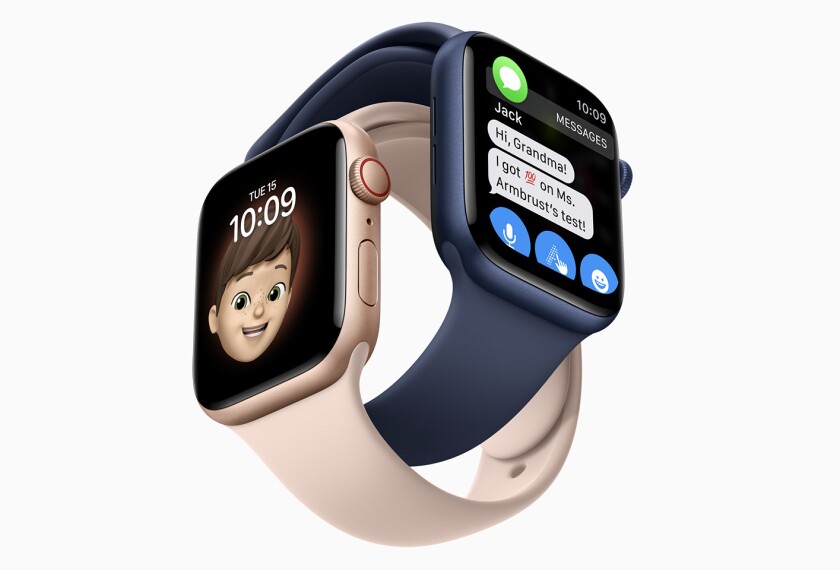It’s hard to miss the impact of Big Tech on classrooms today.
Amazon, Apple, Google, and Microsoft pour millions into K-12 through philanthropies. Microsoft and Google create products just for schools—and give them away for free. All four spearhead efforts to expand computer science courses, teach kids to code, or join the engineering profession. Some enlist educators to serve as representatives and sounding boards for the companies.
That level of influence is front and center at ed-tech conferences such as ISTE and SXSWedu, where Google professional development sessions often attract standing-room-only crowds, and the presence of Apple, Amazon, and Microsoft is everywhere. But that near-ubiquitous presence in K-12 is not welcomed by many educators, some of whom see these companies as bad neighbors with little regard for the true needs of schools.
Our recent, nationally representative survey of teachers echoes those concerns. It found that 60 percent of teachers think Big Tech has too much influence in K-12 schools.
But is that influence really all negative, and all driven by profit motives, as some critics of Big Tech suggest? Let’s take a look.
Sure, Big Tech’s expansion into K-12 may help Amazon sell its cloud storage to schools, or broaden the market for Google’s Chromebooks. But that activity isn’t just about profits, at least not in the traditional sense (and umm, dollars). The reality is K-12 schools aren’t offering these tech companies a bottom-line bonanza, market analysts say.
“Generally, the K-12 education market is not a core profit center compared to wider business,” said Andreas Olah, a senior analyst for education technology at Futuresource Consulting, based in the United Kingdom, which studies K-12 markets. “It’s a lot smaller than most other corporate areas,” including telecommunications and financial services, he said.
What Big Tech does see is an investment in the future, both of workers and customers. “The reason why they are still in this segment is they try to insert their influence as early on as possible,” Olah said. “They want to make sure their operating system, their whole ecosystem, gets really ingrained in students’ lives.”
The idea that tech companies are trying to gain a foothold in the next generation of users by reaching out to schools is probably a bit troubling to that 60 percent who cite too much influence. But does it suggest profiteering motives or just smart business practices?
“K-12 is not a big moneymaker but it’s a big branding opportunity,” said Larry Singer, the former CEO of the nonprofit Open Up Resources who has had leadership roles in large education companies, including Pearson. “It’s a good hedge against public policy interference. It’s a good shareholder branding opportunity. And it makes the employees feel good. It’s a hell of a motivator for your sales force and marketing team.”
Yet that’s not how any of the four companies describe the catalyst behind their involvement in K-12. All four describe their work as mission-driven. They want to provide products and services that help kids learn better.
All four companies declined to say just how much of their revenue comes from K-12 schools. In fact, they said that profits aren’t really what’s important here. Microsoft, for instance, just doesn’t “look at dollars and profit margins in K-12,” said Eran Megiddo, the corporate vice president for education at Microsoft.
Global Silicon Valley, an investment firm that works with education technology companies, estimates that the entire market for learning devices, digital textbooks, and supplemental materials in K-12 stood at about $5.8 billion annually in 2015. That doesn’t sound like chump change. But consider those costs are split between not just the four big tech companies, but also countless others.
60% of teachers think Big Tech has too much influence in K-12 schools.
And then compare that to a company the size of say, Apple, whose brand was valued at $205 billion in 2019, according to Forbes. Or put it against Microsoft’s $110.4 billion in revenue for fiscal year 2018, Google parent company Alphabet’s $38.9 billion in revenue for just a quarter of 2019, or Amazon’s nearly $60 billion in sales in merely the first quarter of 2019.
You’re left with the proverbial drop in Big Tech’s bucket.
But the companies’ efforts may pay off later.
Children may get used to using say, an iPad, in school and beg their parents for Apple products. Or they may get so accustomed to Google’s interface that they’ll turn to the company for years to come—and urge their employers to adopt their products, too.
“The reason the market is attractive is different than why it is for [education company] Renaissance” or other businesses that focus primarily on the K-12 marketplace, said Adam Newman, a founding partner at Tyton Partners, a consulting organization, who has worked with K-12 companies and entrepreneurs. “For a lot of the big tech companies, it is a market, but it’s really an access to a relationship with a customer that has a much greater lifetime value for them than simply their time in elementary school or their time in the K-12 system.”
Representatives from the four tech companies dismissed the idea that they were in the K-12 market primarily to get in early with the next generation of users.
“We are doing it for people,” said Apple’s CEO, Tim Cook, in a speech cited by the company. “If it has an indirect effect on our business that’s fine, but frankly this is from the heart. This isn’t something that I’m saying I expect a return of investment.”
And Zach Yeskel, a product manager for Google, said his company’s investment in K-12 schools wasn’t motivated by the desire to bring on future customers. But he noted that, “businesses are choosing G-suite. They want to have tools that their workforce will thrive on.” Newly minted college graduates, he said, urged their employers to bring on Google operating systems, because that’s what they were comfortable and familiar with.
“We want them to know and love our tools and bring them into the workforce with them,” said Yeskel, a former high school teacher. “I don’t think that means not knowing other tools, but really preferring ours.”
Beyond their proprietary tools, what Big Tech shares in its involvement in K-12 is a big and growing concern about the pipeline of tech-savvy, problem-solvers who will fill the jobs of the future at their companies and others.
“I think it’s really about the evolving business needs of the global workforce,” Yeskel said. “When you look at the skills that people will need in today’s workforce, it’s about problem-solving, it’s about working as a team, it’s about communicating effectively. It’s about speaking the language of computing and being tech savvy.”
Singer added: “They want kids to be successful in K-12. It’s a fundamental macroeconomic issue for them, to return to having high-quality graduates in the United States so that they don’t have to move” their operations.
And then there’s the need for a good public relations push, which arguably, couldn’t be coming at a better time. Policymakers, most prominently Sen. Elizabeth Warren of Massachusetts, a Democratic presidential candidate, have talked openly about breaking up Big Tech or better regulating the sector to prevent the kind of profiteering and consumer manipulation that Big Tech critics decry.
The companies say such critiques are unfair.
“I think if we had just entered the K-12 market recently that would be a reasonable assertion,” Yeskel said. But “our investment in education goes back many years and has been, in many ways, something we did without a lot of fanfare.”
“It’s being a good neighbor,” said Mat Wisner, who leads Amazon’s Future Engineer program.
But experts aren’t so sure.
“Amazon. Apple. Google are all in the crosshairs of policymakers today,” Singer said. “These are good versus evil discussions.”
One way to earn a little goodwill? “Help out your local school district,” Singer said.
< Idea #8 Local Journalism Is in Crisis. That’s a Big Problem for Education
| Idea #10 > Why Don’t Parents Always Choose the Best Schools?
|






